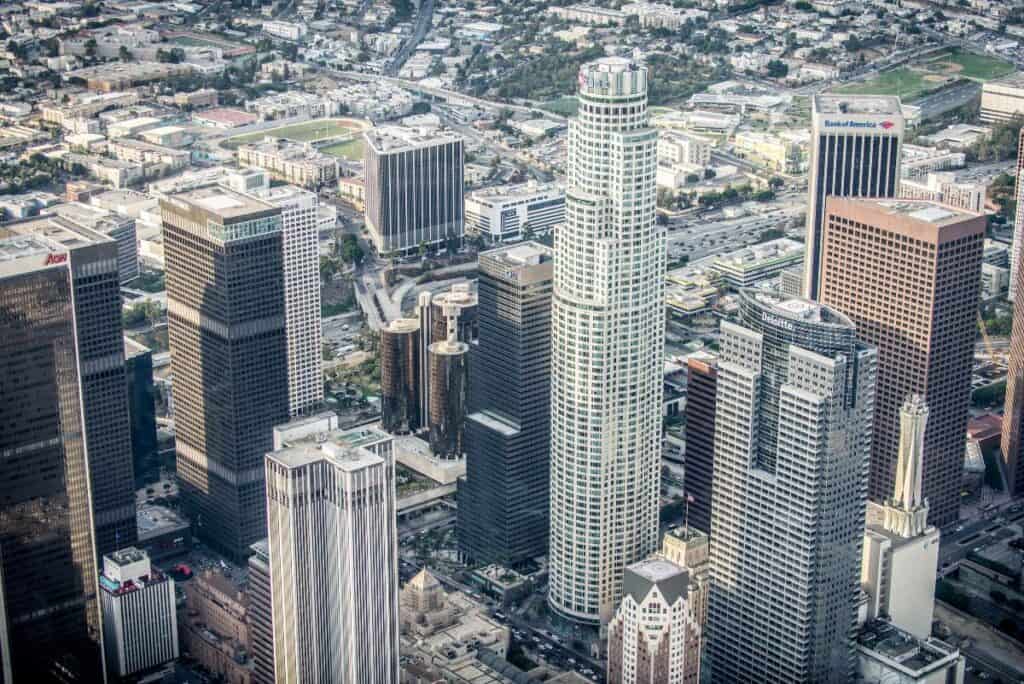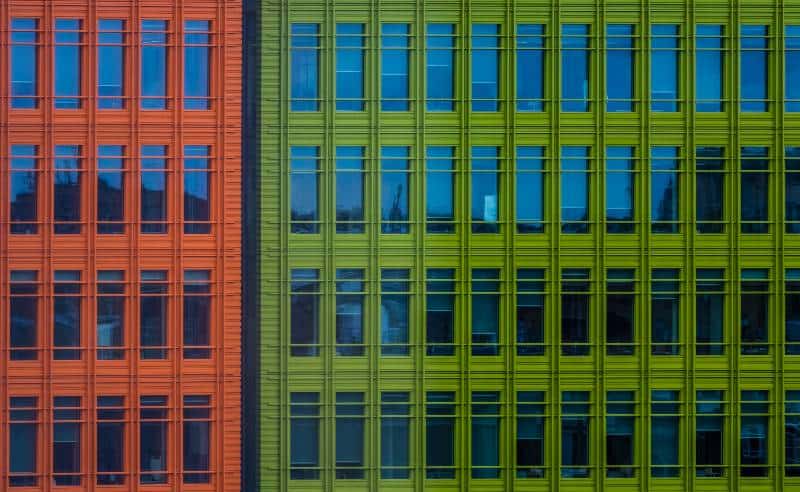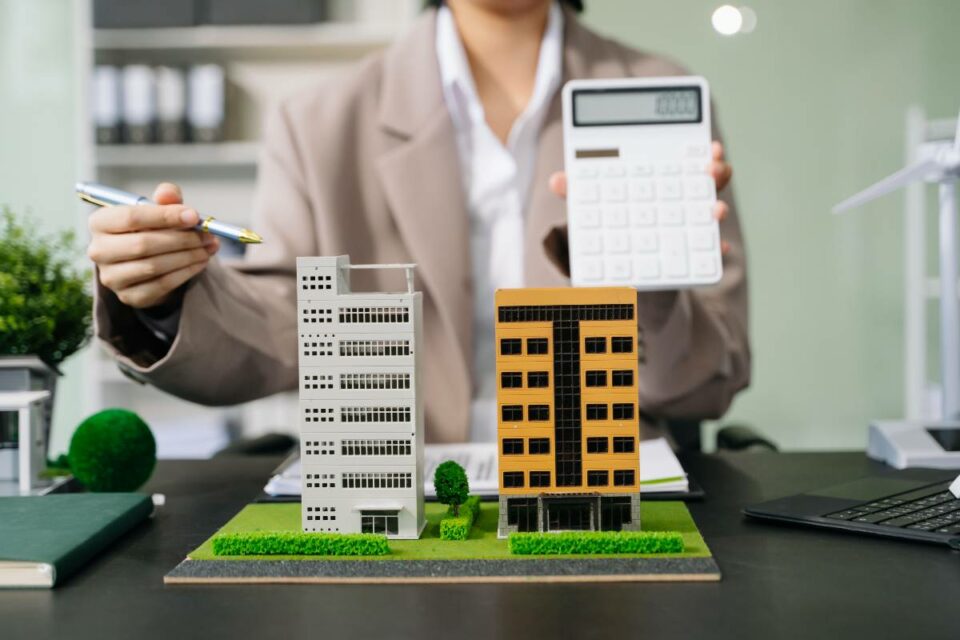Los Angeles has firmly established itself as a cultural epicenter over the past decade. Its entertainment industry and vibrant arts scene have long attracted creatives and young professionals. This has fueled an influx of what noted economist Richard Florida termed the “creative class.”
Recent years have seen city policies increasingly cater to supporting LA’s cultural fabric through grants, public art initiatives, and zoning changes. Combined with large-scale neighborhood revitalization efforts, this has paved the way for some truly innovative transformations in LA’s commercial real estate landscape.
Key Takeaways
- LA’s thriving arts and culture scene has fueled creative innovations in commercial real estate like adaptive reuse and transit-oriented development
- The influx of LA’s creative class is transforming neighborhoods and attracting continued migration of young professionals
- Public-private partnerships and funding sources like Opportunity Zones enable sustainable growth and development
- Implications span investing, leasing, property management, and broker specialization
Table of Contents
LA’s Vibrant Arts and Culture: A Catalyst for Commercial Real Estate Innovation
LA’s Rising Prominence as a Cultural Hub
Creative industries account for 16.3% of total employment in Los Angeles County and 15.4% of total employment statewide, according to the 2020 Otis Report on the Creative Economy.
Downtown LA in particular has undergone a remarkable renaissance, with the refurbishment of many historic buildings.
- Once dilapidated structures have now been restored into ritzy hotels, upscale shopping complexes, and modern office spaces through adaptive reuse projects.
- Zoning changes have also enabled more mixed-use development, allowing retail, residential, and commercial spaces to seamlessly co-exist.
Both local and state policies realize the economic potential of supporting arts, culture, and small businesses. Recent examples include the City of LA’s Adaptive Reuse Ordinance as well as California’s Cultural Districts program offering tax incentives.
Such developments have played a key role in cementing LA’s status as an emerging world capital for creativity and culture.
Impacts on Commercial Real Estate Innovations
The interplay between LA’s cultural ascent and its real estate landscape has birthed some truly remarkable concepts.
Adaptive Reuse and Historical Preservation
Adaptive reuse projects have led to iconic redevelopment like The Row and the Broadway Trade Center which blend historical charm with modern amenities.
As opposed to razing old buildings, adaptive reuse preserves heritage while resurrecting defunct spaces into commercially viable properties. It has been a win-win for both conservationists as well as developers and landlords.
Transit-Hubs Turned Vibrant Creative Zones
Ongoing expansions of LA’s metro have facilitated transit-oriented epicenters like The Culver Steps and Platform around hub areas. These effectively convert transit access points into bustling cultural hotspots with a vibrant mix of retail, dining, and creative office spaces.
Experiential Retail and Dining
Immersive approaches to retail and dining have taken center stage. Concepts like multisensory art shows, Instagrammable pop-up shops, and theatrical restaurants with rotating themes cater to experience-seeking audiences.
For commercial real estate, it has meant retail spaces that offer unique interactive elements command higher premiums. Landlords have also had to retrofit existing properties to meet expectations.
Integrating Technology, Art, and Sustainability
In keeping with LA’s innovative spirit, many developments have also incorporated bleeding-edge technology, sustainability features, and public art installations.
- Smart buildings with sophisticated automation, and efficiency tracking integrate creative placemaking with functionality.
- Sleek modern facades boasting LEED certifications and on-site green power generation signal environmental stewardship.
- Art districts like the Arts District enable interactions between patrons and local artists through galleries integrated with dining and nightlife.
Funding Sources Powering Progress
Much of this growth has been enabled by programs like Opportunity Zones as well as foreign investment capital seeking to tap into LA’s promising real estate market and diverse economy.
Future Trajectory
LA’s cultural ascent is slated to continue, driving associated progress in commercial real estate. Here’s what the future looks like:
Sustained Migration of LA’s Creative Class
LA’s vibrant lifestyle and creative economy will attract more young professionals and creatives. Recent trends already attest to this sustained migration.
Neighborhoods like Venice, Glendale, and Silver Lake exemplify urban regeneration anchored in arts, culture, and small businesses. As Silicon Beach expands, tech talent also continues flocking to Culver City and Santa Monica.
Public-Private Partnerships + Sustainable Development
Civic policies and private funding will likely expand creative placemaking initiatives to balance commercial interests with social welfare.
Sustainable construction practices will also gain further prominence through incentives for green buildings. Hybrid approaches blending conservation, functionality, and aesthetic appeal are imminent.
Neighborhood Transformation
Ripple effects of metro expansion and cultural hotspots will catalyze broader neighborhood transformation. More urban pockets will embrace mixed-use planning, interweaving residential communities with creative workspaces, experiential retail, and microbreweries.
This organic integration promises to reshape the urban fabric into a cultural mosaic that enhances livability. For investors and developers, it unlocks a trove of potential in localized transformation.
Implications for Property Players
While the creative class and experiential concepts steal the spotlight, the cascading impact on more behind-the-scenes real estate functions is farther-reaching.
Specialized Brokerage
With niche developments commanding premiums, brokers need expertise across both property types and associated legalities. Adaptive reuse projects or sustainability retrofitting require navigating complex zoning protocols for instance. An intuitive grasp of LA’s cultural transformations guides effective sales positioning.
Enhanced Property Amenities
Landlords must future-proof assets by incorporating smart building technologies, experience-enhancing amenities, flexible spaces, and sustainability features. These elements fetch higher valuations by attracting discerning tenants from LA’s creative workforce.
Flexible Leasing Options
Creative enterprises prefer shorter or co-working leases to accommodate fluid headcounts and mobility needs. Landlords must accommodate these through versatility in lease durations and property usage terms. Understanding the workstyle priorities of the creative class is key.

How Has The Pandemic Influenced The Commercial Real Estate Industry In LA?
The COVID-19 pandemic has significantly impacted Los Angeles’ commercial real estate landscape over the past few years. From remote work trends to issues around tenant retention, the industry has had to demonstrate agility in adapting to emerging challenges. As the city enters a recovery phase, landlords and investors alike seek optimal strategies to future-proof assets.
Effects Of The Pandemic On Office Space Leasing
Pandemic-induced remote work arrangements have challenged office property owners to re-evaluate spaces in terms of layouts, amenities, and flexibility. With the shift towards hybrid work models, landlords must cater to a dynamic workforce through versatile lease terms, upgraded tech capabilities, and decentralized floor plans. Understanding post-pandemic expectations around wellness and collaboration is key to long-term tenant retention.
Changes In The Demand For Commercial Properties Post-Pandemic
The pandemic has fueled substantial changes in tenant preferences impacting commercial asset types beyond offices. Industrial spaces have risen in popularity due to expanding e-commerce and supply chain needs. Multifamily housing and mixed-use developments offering integrated community spaces have also seen renewed interest from residents and businesses alike.
Managing Director Perspectives On The Real Estate Market Recovery
Industry experts observe that the Los Angeles commercial property sector showcases resilience despite pandemic uncertainty. Drivers include sustained job growth, migration waves, and growing household incomes, alongside a pent-up demand for leisure activities. With appropriate future-focused strategies, assets can harness emerging preference shifts around space usage and tech capabilities for stability.
What Are The Key Considerations When Investing In Commercial Real Estate In Los Angeles?
When evaluating commercial real estate investments in LA, several crucial factors come into play. From zoning regulations to neighborhood transformations, investors must analyze assets holistically while planning for future needs. Understanding the market’s shifting dynamics and aligning properties to emerging preferences is vital for maximizing returns.
The Importance Of Foot Traffic For Commercial Properties
Consistent foot traffic is pivotal to ensuring tenant visibility and sales for retail establishments. For office spaces, pedestrian activity signals a vibrant, amenity-rich location preferred by today’s talent pool. Assessing walkability, nearby residential density, parking, and transit access provides insight into a property’s ability to draw consistent patronage.
Mixed-Use Developments And Their Impact On Property Values
Mixed-use spaces blending residential, office, retail, and dining provide convenience while driving sustained foot traffic. LA’s creative workforce and investors alike find appeal in the seamless integration of living and working. Such holistic developments command rental premiums today, alongside higher property valuations from investors seeking assets with long-term viability.
Future Projections For The 2024 La Commercial Real Estate Market
Experts predict continued popularity of industrial assets in 2024 owing to factors like expanding e-commerce and supply chain needs. Sustained migration to Los Angeles will also fuel the multifamily housing sector. For offices, hybrid work models necessitate upgraded tech capabilities and decentralized spaces. Overall, properties catering to flexibility and future-focused amenities hold strong promise.
The Takeaway for You
- For investors and developers, LA’s cultural backdrop offers no shortage of promising opportunities with neighborhoods undergoing rapid transformation.
- Navigating the legalities around innovative but often complex project types calls for specialized expertise.
- Existing property owners must also infuse versatility and future-focused amenities to stay competitive.
The market’s dynamism certainly warrants an agile yet informed approach. My depth of experience allows me to guide through the maze of policies and players integral to LA’s unique real estate landscape. Schedule a consultation for insights on how to capitalize on the next wave of developments!
FAQs
What constitutes the creative class and what is luring them to LA?
The creative class refers to professionals spanning sectors like technology, business, arts, design, education, law, and healthcare. They value individuality, meritocracy, diversity and crave self-expression. LA’s promise of an eclectic lifestyle with abundant recreation against a culturally vibrant backdrop is a powerful lure.
How are recent development projects balancing the preservation of legacy and future progress?
Adaptive reuse has been integral to retaining old architectural charm while resurrecting defunct buildings into commercially viable spaces. The city has also floated conservation grants to incentivize sustainable restoration. Integrated planning ensures heritage structures can co-exist alongside modern mixed-use properties.
What kind of retail establishments have thrived in recent years?
Experiential retail incorporating interactive displays, augmented reality, and theatrical themes have found success. Pop-up shops with Instagram-worthy backdrops host events and influencer collaborations. Fine-dining restaurants offer rotating, seasonal menus coupled with avant-garde decor. These creative spaces keep patrons engaged.
Which transit hubs show the greatest potential for commercial real estate?
Areas around the expanding metro network are primed for transit-oriented development. The downtown LA hub connecting 7 metro lines makes it a top contender. Other promising zones are North Hollywood, Culver City, Century City, and Santa Monica. Metro lines also stimulate growth in the surrounding neighborhoods.
How are opportunity zones and foreign investments aiding commercial progress?
Programs like opportunity zones offer tax benefits to real estate investors, providing capital for developments. Overseas investment groups view LA’s growth potential as promising and are channeling funds into large-scale mixed-use projects. These funding sources power the creation of new properties and neighborhood transformation.
How does foot traffic affect the value of commercial properties in Los Angeles?
Foot traffic is a key factor in determining the value of commercial properties in Los Angeles, as areas with high foot traffic tend to attract more tenants and customers, resulting in higher property values.
Is it a good time to invest in commercial real estate in Los Angeles?
Despite market fluctuations, many investors see potential in the Los Angeles commercial real estate market, especially in areas like downtown Los Angeles, where ongoing development projects and a diverse range of commercial properties offer investment opportunities.
Conclusion
LA’s ascent as a cultural heavyweight will reshape its urban identity. For real estate, it unlocks immense latent value through refreshed spaces reflecting the future of tenant preferences and work styles.
My expertise and rapport across the industry’s complex web of stakeholders provide the right guidance to help investors capitalize on this promising landscape.
To learn more on how to optimize your property plays or commercial investments, schedule a consultation with me. Let’s chat!




